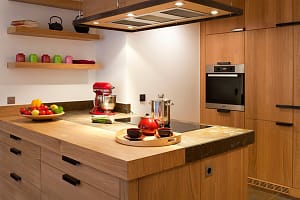We are yet to fully understand whether employees want to return back to the office or not. There is a narrative against it, but the truth is that we appear to be approaching an equilibrium of hybrid working.
The question of home or office, then, poses a question of design. Should we be making our offices more homely?
Resimercial design is just that – the blend of residential and commercial aesthetics, and it has grown in popularity over the years. What this isn’t, is throwing a table tennis table into the middle of an open plan space.
Why employees resist returning to offices
Remote work has a lot of allure, and it’s in part down to convenience. The cost of living crisis is certainly part of that, and ruling out the need to drive or take a train into the office saves a lot of money. But it’s also a matter of convenience in the simplest sense, that home is more homely, and it’s where we feel most comfortable and relaxed.
Key features of resimercial design
Resimercial design has elements that mimic the comfort of our home. Soft seating arrangements is a big part of this, but again, this doesn’t mean bright green fabric seating that looks like an airport. Instead, think single seating arrangements to offer privacy and space, as we do in our home, be it solid woodrocking chair or recliner chairs. These may not sound function, but that’s the point – resimercial design isn’t utilitarian, it’s familiar.
This doesn’t mean that multi-functionality doesn’t have its place, but it needs to be recognizable.
Benefits of resimercial design for employees
Studies show that comfortable and personalized spaces do indeed boost morale and focus. Sitting under sterile lights in a clinical office simply isn’t natural, and it can get in the way of productivity. Work is often our place of stress, unfortunately, and interior design has a lot to say about how it can impact our mental health.
Business advantages of resimercial design
From a business perspective, resimercial design can help with retention, as workers feel as though their workplace is more homely than their previous jobs. It helps build sentiment, and may lead to a shift in culture towards being more welcoming and related. In a time where we’re unsure about the future of WFH, resimercial design may help bridge that gap towards a harmonious, hybrid model where we feel as though the distance between home and work is reduced, mentally.
Of course, it’s not without its challenges. Beyond the investment required and risk of throwing out practicality, there’s also a danger of undermining the entire point of design choice. That is, trying too hard, where you may enter an uncanny valley of forcing a pseudo-home life onto a workforce that is there to earn a living. Balance and subtlety are everything.
So, we believe this may be where the post-pandemic office space has a future in. What we do know, though, is that offices around the world will be making their own attempts to bridge this gap.






Leave a Comment